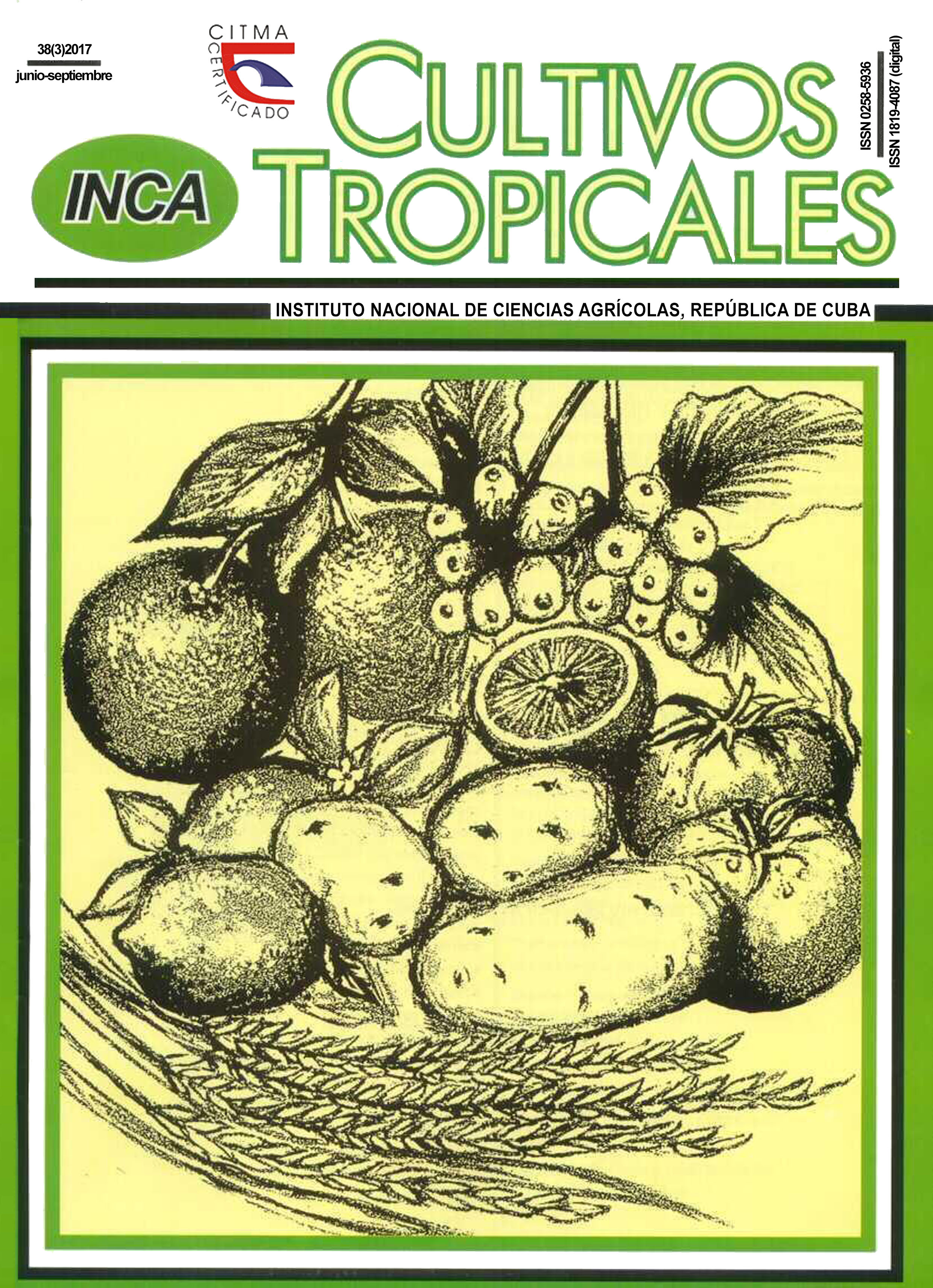Effect of simulated drought using PEG–4000 on germination and seedling growth of two rice cultivars (Oryza sativa L.)
Main Article Content
Abstract
This work was made at Genetics lab from Technological Scientific Basic Unit "Los Palacios" (UCTB), belonging to the National Institute of Agricultural Sciences (INCA), located in Los Palacios, Pinar del Río province. The aim was to evaluate the effect of simulated drought with PEG-4000 on germination and seedling growth of two rice cultivars seeds. Selected cultivars were Guillemar LP-19 and Perla de Cuba (as tolerant control). They were treated at different concentrations of osmotic agent (PEG 15, 20, 25, 30 g L-1) and a control treatment with distilled water was also put. It was evaluated the germination percentage, plant height, the root system length and their dry mass. It was shown differential behaviours among cultivars under drought levels caused by different PEG concentrations. The cultivar "Guillemar LP–19" showed the better behaviour for the four analyzed parameters than tolerant control cultivar. First stages of plant growth presented affectations with the increasing of the PEG-4000 concentrations, as osmotic agent to simulate the stress for drought.
Article Details
Those authors who have publications with this journal accept the following terms of the License Attribution-NonCommercial 4.0 International (CC BY-NC 4.0):
You are free to:
- Share — copy and redistribute the material in any medium or format
- Adapt — remix, transform, and build upon the material
The licensor cannot revoke these freedoms as long as you follow the license terms.
Under the following terms:
- Attribution — You must give appropriate credit, provide a link to the license, and indicate if changes were made. You may do so in any reasonable manner, but not in any way that suggests the licensor endorses you or your use.
- NonCommercial — You may not use the material for commercial purposes.
- No additional restrictions — You may not apply legal terms or technological measures that legally restrict others from doing anything the license permits.
The journal is not responsible for the opinions and concepts expressed in the works, they are the sole responsibility of the authors. The Editor, with the assistance of the Editorial Committee, reserves the right to suggest or request advisable or necessary modifications. They are accepted to publish original scientific papers, research results of interest that have not been published or sent to another journal for the same purpose.
The mention of trademarks of equipment, instruments or specific materials is for identification purposes, and there is no promotional commitment in relation to them, neither by the authors nor by the publisher.
